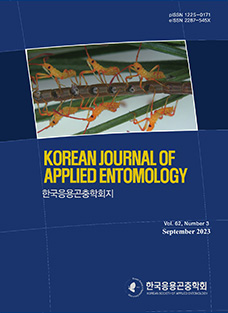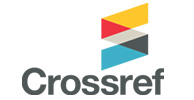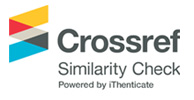The genus Coelioxys is a cosmopolitan group of the cleptoparasitic bees, consisting of more than 480 valid species worldwide (Ascher and Pickering, 2012). Coelioxys species are well known as cosmopolitan species (except Antarctica), but exceptionally, there have only few records in Austrailia not more than ten species (Ascher and Pickering, 2012). They remain poorly studied in terms of species-level classification, host associations, and behavior (Danforth and Visscher, 1993). The species of this genus are known as cuckoo bees because they use stolen food from the host to raise their larvae. Cleptoparasitism is defined as an ecological interaction in which the young of one species feed and develop on the food provided for the young of another species (Rozen, 2000). While most Coelioxys species parasitoids in Megachile, there have also records of parasitism on other bees (Michener, 2007).
Until now, five species(C. fenestratus, C. yanonis, C. quadirdentata, C. hiroba, C. hosoba) of the genus Coelioxys have been recorded In South Korea(Lee and Lyu, 2013). In this study, we report two species of the genus Coelioxys and provide the description, diagnosis, distribution and illustrations.
Materials and Methods
All of the samples of the species was collected by sweeping. The species that used in this study are deposited at Kunsan National University (KSNU). The terminology follows Rocha et al. (2017). For observation and photography, a LEICA DMC2900 digital camera and a LEICA M205 C microscope (Leica Geosystems AG) were used. Helicon software was used for stack the photographs.
Systematic Accounts
Family Megachilidae Kirby, 1802
Subfamily Megachilinae Latreille, 1802
Genus CoelioxysLatreille, 1809
CoelioxysLatreille, 1809.
Type species: Apis quadridentata, Linnaeus, 1758
Coelioxys conoideaIlliger, 1806 (Fig. 1A-F) (흰털뾰족벌)
Anthophora conoideaIlliger, 1806: 73
Coelioxys vectisCurtis, 1831: 349
Coelioxys conicaSpinola, 1839: 307-308
Coelioxys punctataLepeletier, 1841: 1-680
Coelioxys temporalisNylander, 1848: 253
Coelioxys ambiguaSchenck, 1855: 1-146
Coelioxys spissicaudaPasteels, 1968:1-139
Description
Morphology. Female Body. Length of body 13.09 mm, length of forewing 9.58 mm (Fig. 1A, C).
Head. Antennae dark brown; with ten flagellomeres (Fig. 1B), length of head 0.35 x width of head, ocular hairs densely covered, frons and clypeus flat and yellowish setae, supraclypeal area not elevated (Fig. 1D), mandible hard and curved medially on outer surface, occipital carina absent. Mesosoma. Mesoscutum densely punctate, with little to no space between punctures, tegula glossy, mesoscutellum rounded and not concave in central area., length of mesosoma 0.48 x length of metasoma, axilla long and free apical portion longer than basal portion (Fig. 1E). Hind leg. Dark black with yellowish setae; length of hind leg fumer 0.92 x length of hind leg tibia, tibial spurs present. Wing. Forewing; prestigma present; length of stigma 0.07x length of forewing, radius hardened and darkbrown, marginal cell and submarginalcell completely present (Fig. 1C). Metasoma Postgradular grooves of tergum 2 and tergum 3 are broadly interrupted medially, Sternum 6 lack s lateral notches (Fig. 1F).
Diagnosis. In both females and males of Coelioxys conoidea, the pronotal tubercle is sharply carinate and does not form a lamella, unlike other species in the genus Coelioxys (Rocha Filho and Packer, 2017).
Distribution. South Korea (new record) Europe, Iran, Northern Africa, Turkey (Nadimi et al., 2013).
Specimens examined. South Korea, 1♀, Deokgok-dong, Gimcheon-si, Gyeongsangbuk-do (N 36°6'53.3", E 128°8'58.7"), 18. Ⅶ. 2013, Heungsik Lee;
Coelioxys formosicolaStrand, 1913 (Fig. 2A-F) (털보뾰족벌)
Coelioxys formosicolaStrand, 1913: 64
Coelioxys taiwanensisCockerell, 1927: 10
Coelioxys brevisHirashima, 1989: 686
Coelioxys formosicolaNagase, 2006: 224
Description
Morphology. male Body. Length of body 8.91 mm, length of forewing 5.87 mm (Fig. 2A, C).
Head. Antennae dark brown; with 11 flagellomeres (Fig. 2B), length of head 0.39 x width of head, ocular hairs present and yellow in color, frons and clypeus densely covered with yellow setae, supraclypeal area not elevated (Fig. 2D), mandible hard and curved medially on outer surface, occipital carina absent. Mesosoma Apical part of the mesoscutum brown-white scale-like hairs present in a triangular shape, tegula glossy, mesoscutellum without a produced median portion and covered with scale-like hairs at border area contiguous to mesoscutum, length of mesosoma 0.48 x length of metasoma, axilla long and free apical portion longer than basal portion (Fig. 2E). Hind leg. Dark black with yellowish setae; length of hind leg fumer 0.89 x length of hind leg tibia, tibial spurs present. Wing. Forewing; prestigma present; length of stigma 0.12x length of forewing, radius hardened and brown, marginal cell and submarginalcell completely present (Fig. 2C). Metasoma Postgradular grooves of tergum II–V uninterrupted and connected, punctures of the tergum decreased in size toward the bottom (Fig. 2F).
Diagnosis The gradular groove of tergum II in C. brevis is shallow but entire, associated with a nearly entire, transverse, impunctate band immediately posterior to the gradular groove, whereas in C. formosicola the gradular groove is lacking and only the transverse patches of impunctate areas are present laterally (Nagase, 2006).
Distribution. South Korea (new record) Europe, Japan, Taiwan (Nagase, 2006).
Specimens examined. South Korea, 1♂, 177, Hyeoksin 8-ro, Gimcheon-si, Gyeongsangbuk-do (N 33°7'43.2", E 128° 12'2.2"), 10. Ⅴ. 2022, Heungsik Lee;









 KSAE
KSAE





